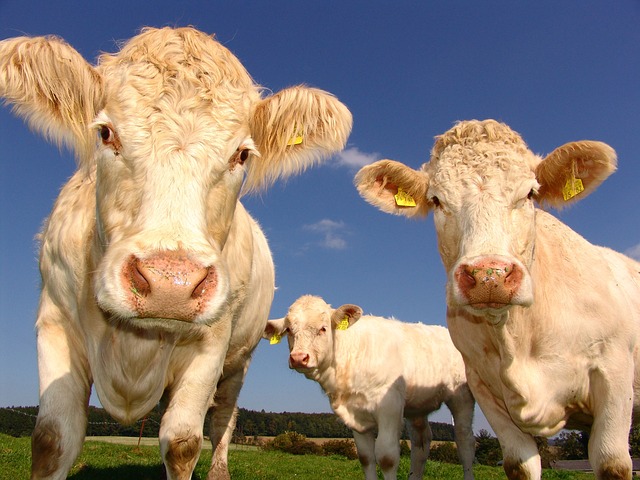This farming or that farming, there are so many farming methods! Are you frustrated and confused by these terms and methods? Natural farming, organic farming, residue-free farming, conventional farming, and other terms are used frequently. Are they all different? Or are we talking about the same farming method? Don’t worry! Anyone will be confused when they first hear these seemingly similar but distinct methods. When you attempt to read, these techniques are simple to understand, sustainable and better than conventional farming.
Let us go into natural farming and have a thorough understanding of it. I’ll also go through its fundamental principles, challenges, and benefits.
Table of Contents
What is Natural Farming?
Natural farming is also known as “Do-nothing farming,” “Fukuoka farming,” or “Zero Budget Natural Farming (ZBNF).” This is an agricultural philosophy and method that advocates working in harmony with nature while minimizing human intervention and external inputs. The principles of this method aim to mimic natural ecosystems to create self-sustaining and resilient agricultural systems, promoting ecological balance and reducing environmental impacts.
The approach was popularized by Masanobu Fukuoka, a Japanese farmer and philosopher, who introduced a non-conventional, sustainable, and regenerative way of cultivating the land. In India, on the other hand, this farming method is popular as Subhash Palekar Natural Farming. Subhash Palekar is an Indian agriculturist & Padma Shri awardee. He was responsible for the promotion of this concept in the mid-1990s.
In recent years, there has been a growing trend toward adopting these farming practices, with various countries promoting and supporting such initiatives. The Zero Budget Natural Farming (ZBNF) movement in India exemplifies the successful implementation of its principles on a larger scale.
Principles of Natural Farming

- No-tillage: Natural farmers avoid tilling or ploughing the soil, as it disrupts the soil structure and disturbs the natural balance of microorganisms. Instead, they rely on biological processes like decomposition to enrich the soil.
- Mulching: Mulching with straw or other organic materials is a fundamental aspect of natural farming. This layer of mulch protects the soil from erosion, conserves moisture, suppresses weeds, and encourages soil microorganisms’ activity.
- No chemical fertilizers and pesticides: Chemical fertilizers and pesticides are strictly avoided in natural farming. Instead, farmers use organic matter, compost, and green manures to improve soil fertility and promote beneficial insect populations for pest control.
- Seed balls: Fukuoka introduced the concept of seed balls, where seeds are encased in a mixture of clay, compost, and other materials to protect them from birds and pests, allowing them to germinate naturally when the conditions are favourable.
- Crop diversity: Natural farmers promote a diverse range of crops to create a balanced ecosystem, reducing the risk of pests and diseases and enhancing soil health through varied root systems.
- Livestock integration: In some natural farming practices, livestock is integrated into the system to provide manure and contribute to nutrient cycling.
- Observing and understanding nature: Natural farmers carefully observe their environment, weather patterns, and natural cycles to make informed decisions rather than relying on rigid schedules or external advice.
Challenges of Natural Farming

Despite its numerous benefits, this farming method faces some challenges that hinder its widespread adoption:
- Knowledge and Education: Implementing these farming techniques requires a deep understanding of local ecosystems and natural processes. Farmers need adequate training and education to adopt and adapt these practices effectively.
- Labour-Intensive: Zero budget practices can be labour-intensive, especially during the initial phases of establishing the system. This might be a deterrent for farmers accustomed to conventional methods that rely heavily on machinery.
- Yield Limitations: Natural farming might not yield as highly as conventional agricultural methods, especially in the short term. While it promotes sustainability and long-term benefits, farmers might be reluctant to switch due to financial concerns.
- Market Demand: The market demand for organic produce, which often aligns with natural farming practices, may not always be stable or well-established, making it challenging for farmers to find profitable avenues for their products.
Benefits of Natural Farming

- Sustainability: Natural farming practices promote ecological balance, soil health, and biodiversity, contributing to long-term sustainability and reducing environmental degradation.
- Reduced Input Costs: By relying on locally available resources and minimizing external inputs, this farming reduces the financial burden on farmers, making it more accessible to small-scale and resource-constrained farmers.
- Improved Soil Health: Zero-budget farming enhances soil fertility, structure, and nutrient cycling through the use of organic matter, compost, and mulching, resulting in healthier, more resilient soils.
- Water Conservation: Mulching and no-tillage practices in zero budget farming help retain soil moisture, reducing the need for irrigation and conserving water resources.
- Climate Resilience: Natural farming’s emphasis on diversity and ecosystem balance makes the system more resilient to extreme weather events and climate fluctuations.
Bottom Line…
Natural farming, based on the principles of Masanobu Fukuoka, is an environmentally friendly and sustainable agricultural approach. It aims to work in harmony with nature while minimizing human intervention and external inputs.
Zero-Budget Natural Farming’s emphasis on no-tillage, mulching, crop diversity, and no chemical inputs promotes soil health, biodiversity, and climate resilience. This farming method faces challenges such as knowledge dissemination, labour intensity, limited initial yields, etc. Its benefits include sustainability, reduced input costs, improved soil health, water conservation, and climate resilience.


